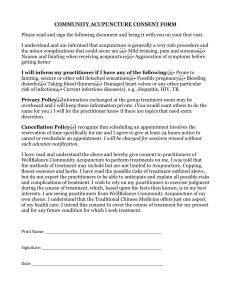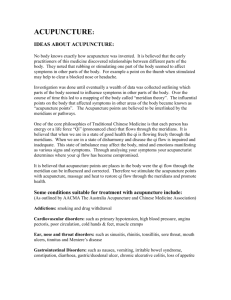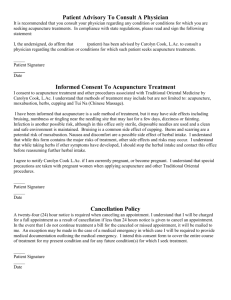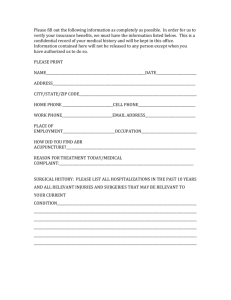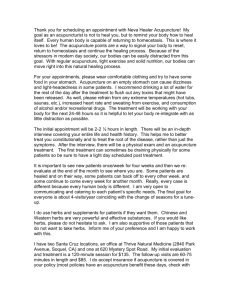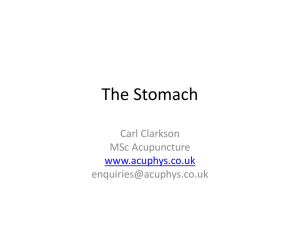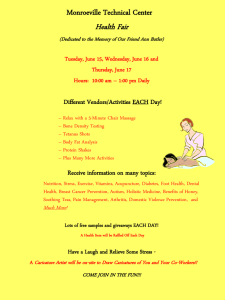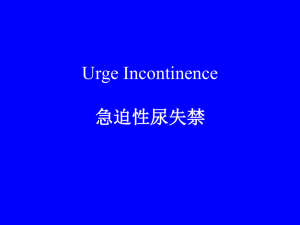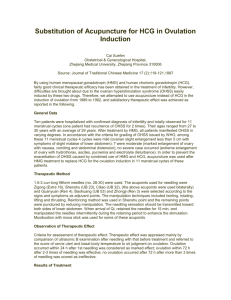Clinical_Acupuncture_Course_contents3
advertisement
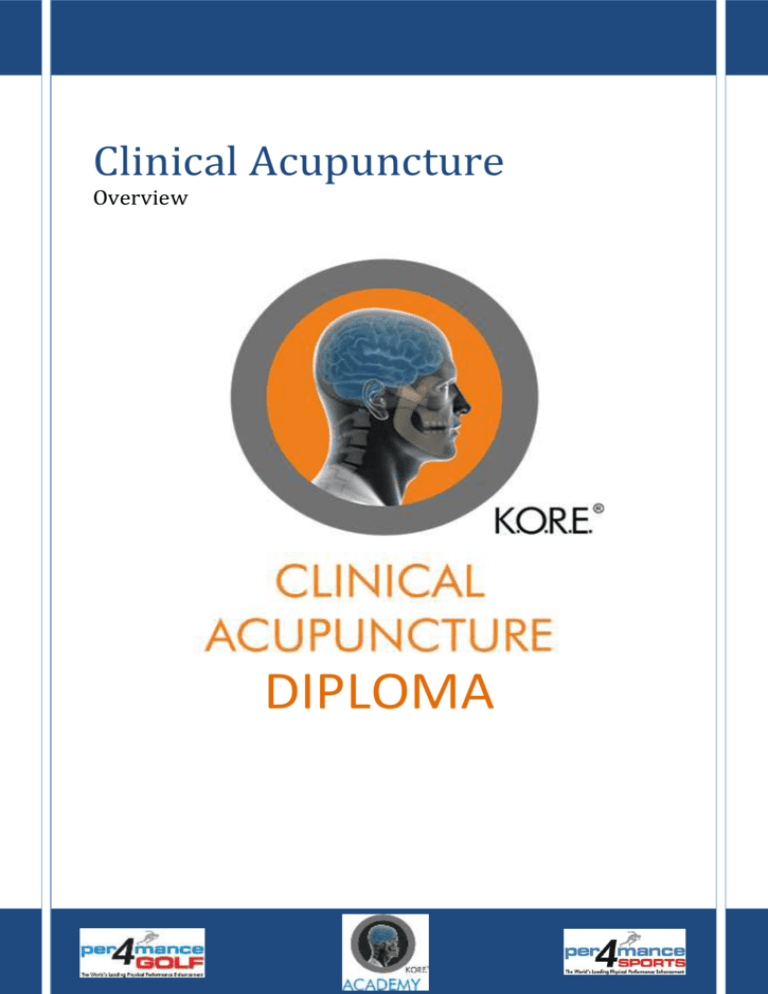
Clinical Acupuncture Overview DIPLOMA 6 Month/12 days Clinical Acupuncture Course Course Introduction / Outline This specialist course is a modern implementation of traditional Chinese acupuncture for therapists & Healthcare Professionals. The course includes an introduction to Traditional Chinese Medicine (TCM) theory, which serves as a foundation for the practical clinical section, and is essential for any non-acupuncture practitioner. The theory is designed to provide a working knowledge and understanding of the Acupuncture System, and the acupuncture points commonly used. Students are taught choice, location and needling techniques to treat more than 20 research based diseases and conditions from headaches to injuries. Please find attached a complete breakdown of the modules for your records Contents ACU COURSE INTRODUCTION / OUTLINE, TRAINING OPTIONS, ACCREDITATION AND PRE-REQUISITE QUALIFICATIONS............................1 MODULE 1 ............................................................................................................2 MODULE 2 ............................................................................................................3 MODULE 3 ............................................................................................................4 MODULE 4 ............................................................................................................5 MODULE 5 ............................................................................................................6 MODULE 6 ............................................................................................................7 Training Options A. Companies can book a variety of dates to cover the 12-days to suit their business needs. B. Individuals take the training as 6 weekend dates C. We are happy to deliver our training courses to groups above a minimum of 10, please contact our head office to enquire (info@koretherapy.com) Course accreditation This course is accredited by the Acupuncture Society. Once registered you can apply for student insurance to cover your training practice and full qualified insurance with your final certificate (The FHT will also insure you for this course). Full qualification & registration enables you to use MAcS CL after your name on your business documentation. Pre-requisite qualifications All students must have recognised qualifications in a bodyworks therapy that include anatomy & physiology level 3. A telephone interview with site of your qualification and practice insurance is needed. Please contact us 01253 728035 for further clarification if you are unsure the criteria. Page 1 Module 1 Theory Content History of Acupuncture. Jing Luo - Introduction to 12 Meridians Introduction to 5 Element Acupuncture and clinical applications Cun Measurement system Research and study of classroom materials. Safety & security Practical Functions, indications and locations of Acupoints. Lung - 5, 7, 9. Large Intestine - 4, 11, 15, 20. Spleen – 3, 4, 6, 10, 15. Stomach – 8, 25, 36 ,40, 41 Basic Needling techniques – depth, angle, direction and applicable contraindications Assignments Write a short paper (No More than 150 words on each subject), describing the following Western diseases: High Blood Pressure, CVA & Sequelae Student Port folio instructions issued. Draw mind maps for the Acu-points taught in this module. Describe/explain the Western Functions of Lung, Liver, Spleen and Stomach. Learning Outcomes At the end of this module the student will be able to: Outline the history of Acupuncture, List the 5 elements and associated aspects. List the 12 meridians. Successfully locate the module acupoints and list 2 actions of each acupoints. Page 2 Module 2 Theory Content Revisit and revise Module 1. Functions of the Zang-Fu Organs. Meridian pathways for Liver/Gall Bladder, Kidney/Bladder meridian. Introduction to Spinal Composition. Research and study of acupuncture protocols for CVA and Sequelae, High Blood Pressure, Trigeminal Neuralgia, Angioneurotic Headache, Dizziness and Vertigo. Practical Functions, indications, and locations of Acupoints. Liver – 2, 3, 8. Gall Bladder – 20, 21, 30, 34. Kidney – 3, 6, 7. Bladder – 10, 40, 60, 62. Introduction to Bladder Back Shu points. Basic Needling techniques – depth, angle, direction and applicable contraindications Assignments Write a short paper (No More than 150 words), describing the following western diseases: Paper 1:Frozen shoulder and Diabetes, Paper 2: Headaches and Amenorrhea Draw mind maps for the module Acu-point actions Describe/explain the Western Functions of Liver, Gall Bladder, Kidney, and Urinary Bladder. Learning Outcomes At the end of this module the Acu-student will be able to: List briefly the Functions of the Zang-Fu Organs; understand the interaction of the 5 elements. Successfully locate the module acupoints. List 2 actions of each module acupoint. Describe the relative nature of Yin & Yang, and describe the laws of interaction of Yin & Yang. Page 3 Module 3 Theory Content Revisit and revise Module 2. Meridian pathways for Heart / Small Intestine, Pericardium / San Jiao. Research and study of acupuncture protocols for Musculo-skeletal; shoulder, elbow and wrist joint pain. Diabetes, headaches and amenorrhea. Practical Functions, indications and locations of acupoints Heart – 3, 5, 7. Small Intestine – 3,9,19. Pericardium – 6, 7. San Jiao – 5,6,10. Continuation of Bladder Back Shu points from module 2. Basic Needling techniques – depth, angle, direction and applicable contraindications Point prescriptions for patterns of disease Assignments Write a short paper (No More than 150 words), describing the following western diseases: Paper 1: Diarrhoea and constipation Paper 2: Sciatica and infertility Draw a mind map for the module Acu points. Learning Outcomes At the end of this module the Acu-student will be able to: Successfully locate the module acupoints. List 2 actions of each module acupoint. Describe/list & practise Treatment Principles for diseases covered so far. Page 4 Module 4 Theory Content Revisit and revise Modules 1-3 Meridian pathways for Du and Ren channels. Research and study of acupuncture protocols for: Musculo-skeletal - Hip, knee and ankle problems, sciatica, infertility, constipation and diarrhoea. Tongue diagnosis Practical Functions, indications and locations of acupoints. Du - 4,14,20. Ren – 4, 5, 6, 12, 17. Basic Needling techniques – depth, angle, direction and applicable contraindications. Tongue diagnosis Assignments Write a short paper (No More than 150 words), describing the following: Paper 1: Chronic Fatigue syndrome and Arthritis Paper 2: skin allergies: urticarial, eczema, neurodermatitis Draw a mind map for the Back-Shu points Du and Ren Learning Outcomes At the end of this module the Acu-student will be able to: Describe the clinical applications of the module points. Describe/list & practise Treatment Principles for diseases covered so far. Understand the meridian correlation to the tongue and be able to use as part of treatment assessment. Page 5 Module 5 Theory Content Revisit and revise Modules 1 to 5 Research and study of acupuncture protocols for: skin diseases, arthritis and chronic fatigue syndrome. Chinese medicine prognosis process Practical Basic Needling techniques – depth, angle, direction and applicable contraindications Revision of Functions, indications, of Acu points Disease Treatment Principles and point prescriptions Assignments Revision Portfolio update Learning Outcomes At the end of this module the Acu-student will be able to: Describe, list and chose point prescriptions for 20 common diseases. Demonstrate practical and safe acupuncture for 20 common diseases. Understand the TCM theories which form the foundations for the practical clinical acupuncture. Page 6 Module 6 6.1 Theory Content Preparation for Final written Exam. Preparation for practical exam. 6.2 Practical Basic Needling techniques – depth, angle, direction and applicable contraindications Revision of Functions, indications, of Acu points. Group Activities in preparation for final examinations. 6.3 Final Assessment Written assessment 2 hour paper Practical Examination – 2 patients per student, each session not to exceed 1 hour. Page 7
